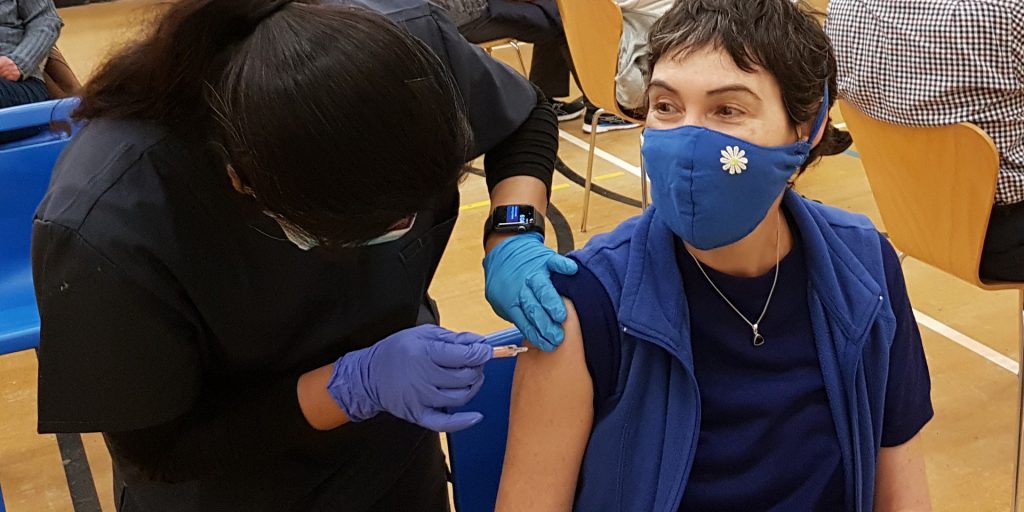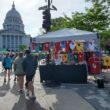How technology can ensure equitable access to the COVID-19 vaccine
For more than a year, the COVID-19 pandemic has ravaged the United States, leaving millions infected and more than 500,000 dead. There are now multiple vaccines being distributed to snuff out the spread of this deadly disease. However, the real challenge will be immunizing all Americans who want the shot. Urban areas have the resources, population density and facilities to do mass vaccinations in places ranging from sports stadiums to pharmacies. Rural areas, unfortunately, will face significant challenges in providing these services to their residents.
According to U.S. census data, rural areas account for about 97 percent of the nation’s land but contain just over 19 percent of the population (roughly 60 million people). Many of these counties are far from urban centers and are sparsely populated, where traveling for hours to vaccination centers isn’t practical. Every state and county will need to examine how they help these underserved communities get equitable access to the vaccine and ensure nobody gets left behind.
Americans living in rural regions faced many health care issues even before the pandemic. They have fewer hospital beds per capita, fewer health care workers, and less access to things like telehealth and testing. On top of that, they also have higher poverty rates and tend to be older and more likely to have chronic underlying health conditions. Studies reveal that rural Americans are significantly less likely to take a COVID vaccine than their urban counterparts.
To overcome all of these challenges, local and state levels of government need to work together. They must work on messaging to address the concerns of their citizens and show the vaccine is safe. To accomplish this, trusted local influencers, like elected officials, clergy and educators, need to be engaged. Information about the vaccine must be spread everywhere, from the pulpit to the grocery store.
The physical transportation of the vaccine can be problematic. The Pfizer/BioNTech vaccine requires it to be transported in a deep freeze of -94°F. Once it’s defrosted for use, it can be stored in a regular refrigerator but will only remain viable for five days. The Moderna vaccine can be frozen at a lower temperature (-4°F) but has a shelf life of 30 days once thawed. Once a community gets its batch of doses, it must move quickly to inoculate the community, so none of the vaccines go to waste. Both vaccines require two doses, so the process must be repeated three to four weeks later.
Currently, couriers with the vaccine in special freezers make deliveries from distribution centers to rural hospitals. However, some do not have freezers capable of storing the vaccine, so they need to use it quickly.
Local governments and health care providers must develop a reservation system that can be accessed online and by phone to accommodate everyone who wants to be vaccinated. This approach will ensure there are enough doses available to minimize the chance of exposure while people are waiting at the clinic, hospital, or pharmacy. The reservation system must be available by phone because many rural communities have limited access to broadband internet services.
Due to the distance some rural communities are from hospitals and clinics, deploying mobile vaccination centers could help fill that need. It could be a simple recreational vehicle to a more elaborate set-up that requires a semi-tractor-trailer. The idea is to target the smallest communities that have the greatest distance to the hospital. These centers can operate with minimal staff: a driver for the vehicle, a person to set up the site, nurses to administer the vaccine, and people to register patients and direct traffic. The mobile center could stay for a day or two, vaccinate everyone who wants the shot, and then move on to the next small town. It could then return weeks later to administer the second shot.
When the pandemic first arrived, large urban centers like New York and Boston saw the greatest number of infections and deaths. Unfortunately, since the fall, COVID-19 has hit rural areas hard as well. There is light at the end of the tunnel though. More than 50 million Americans have received at least one vaccine shot, with an average of 1.6 million doses being administered each day. Technology will help speed up the vaccination rate in rural communities and ensure that everyone in the U.S., no matter where they live, is protected against COVID-19.
Kevin Grauman is the president and CEO of QLess, a line management system used by retail, education and government industries. He is no stranger to the world of startups, with a proven track record as a successful U.S.-based executive leader and entrepreneur. Grauman has been recognized as one of the “100 Superstars of HR Outsourcing in the USA” by HRO Today Magazine.



















